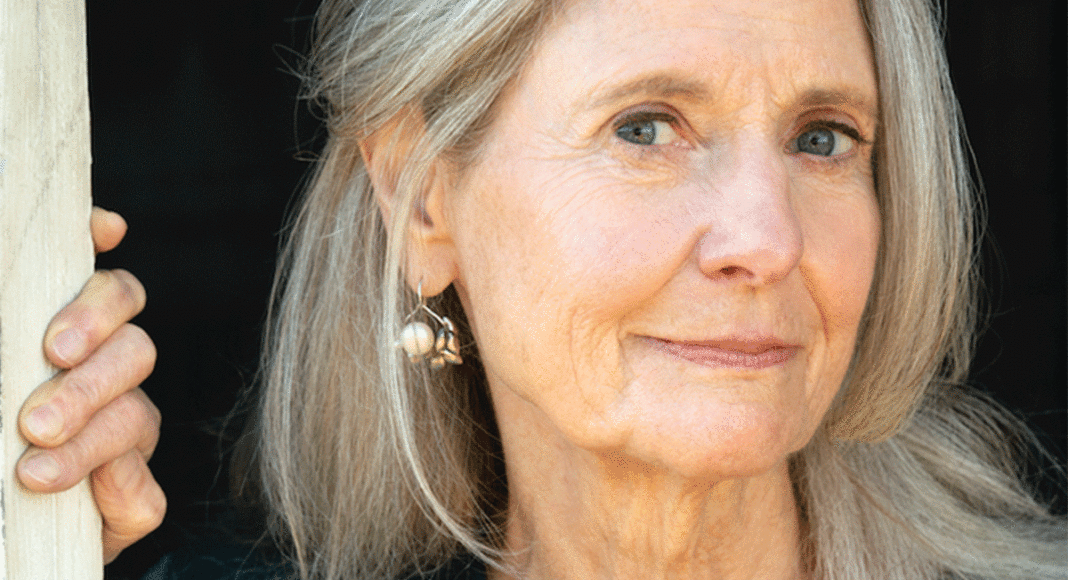The inevitability of death has always been a source of dread and anxiety, across ages and human societies. But the modern age has produced a new and very particular dimension to that primal fear.
Many of us these days fear not so much the fact of death, but more the chaotic, disorienting and often extremely expensive process of dying that modern medicine has made common.
But if dying is still inevitable, a messy and inhumane death it does not have to be. That’s the message behind journalist Katy Butler’s new book The Art of Dying Well: A Practical Guide to a Good End of Life (Scribner).
Butler, who visits Bookshop Santa Cruz on March 27, has crossed this terrain before. Her 2013 book Knocking on Heaven’s Door: The Path to a Better Way of Death was part memoir, part investigation, offering the story of her father’s death as an illustration of what she calls “the Gray Zone,” the suspended state between an active life and clinical death that has been largely created by medical technology.
“I felt that I had laid out a problem in the first book,” says Butler, a long-time Bay Area reporter and writer. “I felt there was a need for a book that was about solutions. And that’s really the difference. This book says, OK, granted that we have a broken medical system that is very fragmented toward the end of life, and that we are afraid of death anyway. So given these problems, here are the workarounds, stories of people who have actually risen to the occasion and trusted their own best instincts to create a death that was less bad, or maybe even really good.”
The Art of Dying Well works best as a kind of handbook. Its seven chapters are determined by the particular stages of life, from “Resilience,” when you’re still active and healthy, all the way to “Active Dying,” the moment when it’s time to say goodbye. Along the way, each chapter outlines the attitudes and methods of preparation that could lead to a dignified and emotionally fulfilling end of life. The book’s format, says Butler, allows readers to return to it at different times in their lives.
“If you’re in the ‘Resilience’ part of life,” she says, “where you can still reverse a lot of health conditions, then you might want to read that chapter and call it a day, and put it away until you’re in some very different stage of life. And, if you’re in crisis, if there’s someone in your house who is dying, then skip the early parts and turn to the last two chapters and you’ll get a lot out of that.”
Butler was inspired by an antique text called Ars Moriendi, translated from the Latin as The Art of Dying. The text dates back to the 1400s and is a kind of medieval guidebook on the best way to meet death. She calls it one of the first bestselling self-help books. “It framed dying as a spiritual ordeal, and it named five different sorts of temptations and emotional struggles at the end of life, and how your attendants or friends could reassure you and help you through that.”
Though the fact of dying hasn’t changed, the circumstances of death have been upended since the Middle Ages. Butler, 70, started the writing process mindful of what links ancient ideas of death with contemporary ones.
“I do think there’s some commonality to what people think of as a good death. Clean and comfortable and relatively free from pain, having people that you love around you, being spiritually at peace,” she says. “Those things are still the same.”
The new book also offers up practical policy ideas to address what she calls a “technology-rich but relationship-poor” health care system. One such idea is a Medicare program known as PACE, which keeps ailing seniors out of hospitals and nursing-care facilities when it’s practical to do so, while still meeting their needs for home care, therapy and medication. The problem is, PACE is limited in its capacities and its funding. Still, there are many more down-to-earth approaches people can adopt to make a fulfilling end of life better for everyone—approaches that previous generations knew something about.
“You look at the ‘Greatest Generation,’” Butler says of those who lived through the Great Depression and World War II. “They had stronger social networks and more of an understanding to bring a cover dish when someone has a major health crisis. We need to relearn some of those more rural or red-state values of neighborliness and being part of community groups. That stuff matters.”
Katy Butler, author of ‘The Art of Dying Well: A Practical Guide to a Good End of Life.’ Wednesday, March 27. 7 p.m. Bookshop Santa Cruz, 1520 Pacific Ave., Santa Cruz. Free. bookshopsantacruz.com.














